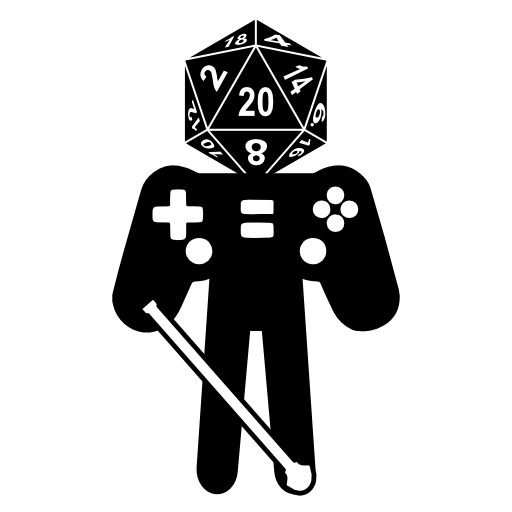Hi, I’ve been meaning to make a travel-friendly ergonomic keyboard setup for a couple years ago after starting /r/ergomobilecomputers, so far just been on a raised tablet setup with a regular keyboard (a setup I’ve enjoyed, but will confess I’ve some slight pain from using a standard keyboard with it)
What kinds of recovery stories have you experienced yourself or heard from others in using a certain ergomechkeyboard?
Were there things outside of having a more ergonomic setup that helped (i.e. just better sleep, diet, hygiene, mood) too?
Basically curious to hear some stories of how these things have helped fellow jank-embracers!
I did try searching around the original sub for ‘pain’ and ‘rsi’ but feel like it may be worth asking again on here.
UPDATE: Thanks again for all the stories so far both here and on the related reddit thread! Made me revise a brainstorm keyboard idea that could facilitate redirecting pinky use on the left control key + right arrow keys to something that uses the thumb + index finger instead.
Yeah, that’d be me. Switched to a Moonlander first to manage an RSI, went cold turkey to Colemak too. As someone else said, I wouldn’t recommend switching layouts. I like it, but I don’t necessarily think it’s worth it.
I think the split + tenting definitely helps. Actually, scratch that: I know, because whenever I switch back to my Apple keyboards the ulnar deviation pain is obvious. But I think the fact that the switch slowed me down SIGNIFICANTLY helped, too.
I’m deep in the rabbit hole now, though, on a Corne, as I found besides ulnar deviation, right pinkie overload was the next cause of pain. And wrist rest use (turns out you’re not supposed to use those for typing, just for resting, but no one tells you until it’s too late).
So yeah, lots of factors, you have to honestly assess yours and address them. It’s not a straight line, you kind of have to try and see what works for you.
I’m deep in the rabbit hole now, though, on a Corne, as I found besides ulnar deviation, right pinkie overload was the next cause of pain.
Also two of Corne’s thumb keys are far too much inward 😬, known to cause thumb issues.
Yeah, I’ve hit some of that. Placed some relatively “less used” keys there.
I started to get pain in my forearms when learning to touch type, after almost two decades of two finger, hen peck typing 😳
After using a Microsoft Ergonomic keyboard I noticed a massive improvement, within a short space of time, in that forearm pain was eliminated and negative tilt was just unquestionably comfortable. I complimented this gradually with retraining muscle memory for Colemak-DH (functional layout), and correcting my desk height and chair height for correct posture.
The Microsoft Ergonomic keyboard has been “quietly retired” in favour of split bodied, programmable, ergonomic mechanical keyboards that further increase ergonomics and continue to prevent pain in my forearms.
Suffice to say I’ll never go back to a “slab” keyboard nor positive tilting. It’s perplexing to me and an oversight by the peripheral industry that truly ergonomic design for Human Input Devices (term encompasses keyboards and pointing devices) hasn’t become mainstream or standardised, given the medical benefits and general sensibility 🤷♂️
Yes. Besides keyboards, adjusting my desk and chair and even monitor (VESA arm) has been amazing.
On the topic of HID, that also extends to Braille displays and keyboards which are, for some reason, consistently more ergonomic.
Check out the eight big blue keys on the Focus 14, for an example: a proto-columnar stagger.
I say this as someone who’s fully in the weirdo zone, currently typing this from a 30-key board of my own invention with a strange layout: I don’t think going beyond something like a Microsoft Natural keyboard will do a whole lot for rsi. Don’t get me wrong, it’s fun and it does help! But realistically I think you hit diminishing returns pretty quickly.
In my experience, most bouts of typing pain that I’ve encountered in two decades as a professional software developer have ultimately been caused by myofascial issues in my arms, shoulders, and neck. The muscles in your upper back and neck can shoot pain, tingling, and numbness down your arms, hands, and fingers, far away from where the actual problem is. For example your scalene muscles in the base your neck, which can get tight from sitting with raised tense shoulders, can cause pain and numbness in your wrist, thumb, and index finger. Ditto with your infra- and supraspinatus muscles in your upper back. No amount of wacky layouts and homerow mods will correct that, but getting a deep tissue massage (or better yet, learning to do it yourself) will.
As nerdy people living in a consumer culture, I think it’s natural to want to search for a technical solution or a product to buy, and certainly having equipment that allows you to work in a comfortable and relaxed posture is important, but learning about the body and how to do some basic muscle maintenance will likely serve you better than waffling between 30g vs 35g springs in your switches.
Now that being said, I do have a messed up joint in one of my thumbs from a few too many skateboard crashes, and it does not bend in certain directions. Keyboards with very “tucky” thumb clusters or too heavy a spring on that switch are painful to use, and changing to a board that more naturally accommodates that injury absolutely does help.
I had wrist pain for several years (on and off) before I bought an MS Ergonomic Natural keyboard. That and an evoluent vertical mouse eliminated my issues.
I have since moved to a UHK split keyboard and love it.
Ulnar nerve entrapment in both arms here. Split keyboards alleviated most of the issue. Buhbye ulnar deviation, so less pressure on my nerves.
I could have stopped with a Microsoft Natural keyboard and been fine pain-wise, but I had already started down the mechanical rabbit hole and missed the feeling of mechanical switches. The basic ideas of split, tenting, and reverse tilt helped a ton, but I could have been fine without column stagger or a reduced layout.
I now use a 40-key low profile column staggered split with Colemak-DH and it’s a joy to type on. Learning Colemak-DH was probably the lowest benefit to effort of all the changes I’ve made, so I don’t exactly recommend it. Now that I’ve already spent the time to learn it, though, it’s definitely comfy to type on. If you want a mobile setup though, I think a split board like a Corne, Sweep, or Totem, or one of the many derivatives would be a great upgrade for your tablet setup. There are a few solutions for tenting but you may find you don’t need it - while it was essential for me at first I’m now fine using a split board flat on the desk.
I also found a vertical mouse made a big difference- I used the $15 one from Anker for a few years. Trackballs can be good too. I also noticed holding my phone put my wrist at an awkward angle, so I got a pop socket and that was helpful too.
Interesting to hear the pop socket helped with the phone! Been meaning to just wean my phone use but may consider that.
I had wrist pains every now and then over the years. They never felt bad enough so find a doctor, so it never had a specific diagnosis.
Then I had a worse brush with wrist pain I decided to try several split keyboards (Microsoft Sculpt on and off, Kinesis Freestyle Edge, Ferris Sweep, Kyria) and they didn’t really improve things and sometimes gave me new pains. Only after switching to a Kinesis Advantage2 I saw large improvements and wrist pains mostly going away.
I also started to be more mindful of taking breaks (sometimes it works out, sometimes I am so focused that time flies by) and do some hand exercises during breaks. I also got an easily adjustable standing desk (just a press of the button), so I can tune it to have exactly the right height and switch between sitting and standing.
I’m not quite sure if I ever had “real” RSI, but I switched to a split ortholinear keyboard 4-5 years ago and I never have any pain/numbness/etc in my wrists anymore, despite programming all day.
I would say that a split keyboard is absolutely 100% mandatory for everyone who uses a computer. Your wrists are not meant to bend the way they do with a slab keyboard. Anytime I see someone post an expensive slab mech keyboard I cringe so hard - such a waste of money.
Ortholinear doesn’t seem like it has that much impact on RSI but I appreciate it still, and I would go for it if an ortholinear keyboard doesn’t cost too much extra.
I also use linear switches and replaced the springs on them to like 30g or something super light. I think it’s more comfortable to tap and type quickly with but I guess you have to be more confident with keystrokes or you’ll mistype stuff. I don’t know if I’ve seen anyone else do this in the name of RSI, and IDK if it actually helps that much.
Also as a semi-related tangent, I wouldn’t recommend switching from QWERTY to Dvorak/Workman/Colemak unless you’re a big nerd. I did it a long time ago and I think those layouts are objectively superior and more comfortable, but I don’t think they really do that much for RSI. I type the same speed as I did on QWERTY, it’s just a lot more “zen” now, and my fingers don’t move very much. QWERTY finger movements are so chaotic in comparison. The problem is it took me about 2-3 months of practice to get to ~40 WPM on a new layout, after which I switched full time and my WPM quickly grew back to around 140. I used to have issues with QWERTY muscle memory acting up every once in a while but it doesn’t happen anymore. I still type QWERTY on my phone - seems to be different muscle memory.
Thanks for sharing and nice to hear the argument that " a split keyboard is absolutely 100% mandatory"
Yeah, part of the reason I’m asking is because I was originally set on a rather subtle design (split monoblock with a bit of angle, not much space in-between). I had some slight pain on occasion but largely viewed many users on here doing more ‘preventative’ setups.
The recent pain has been making me ask myself again whether to do that approach or go for a more complicated sparatable split design. I’ve used fully split setups before but they weren’t travel-friendly.
There are two major benefits in ergonomics with fully-splits. They are that, 1, they acknowledge that one size does not fit all in that they offer a way to move them around and find the right angles and positions for you and your hands; and, 2, “the best posture is the best posture” - i.e. the ability to move and adjust your setup throughout the day/session is itself an ergonomic benefit, staying in one posture is one of the roots of RSI.
Another thing that full splits offer that you may find beneficial is tenting, especially (again) adjustable tenting. Monoblocks don’t tend to be tented and when they are they are stuck at a fixed angle, if that’s not the right angle for you then it’s a problem, and adjustability is king for the aforementioned reasons.
Now, there are many factors, split keyboards are not a panacea. Mouses/pointing devices play a role, as do chairs, desks and maybe most importantly habits! Take regular breaks, move around, etc. Again, the best posture is the next posture.
Also don’t listen to people on the Internet and consult a doctor/physiotherapist.
I use a fully-separated split keyboard, but I imagine a keyboard that has a reasonable angle in the middle will still give most of the benefits. I used to travel with my split keyboard a lot and it wasn’t really an issue with a proper carrying case of some kind. If you are really concerned about RSI I would put that worry as first priority, before considering things like ease of portability etc. I’d rather be annoyed with a travel setup than need wrist surgery later.
Yes, but I think mostly because it’s split and tented more than having a columnar stagger. I’m currently using a Sofle rgb v2.1. Using a vertical mouse also saved my right elbow. Whenever I travel for work and use my laptop’s keyboard, I have to take long breaks every 90 minutes because my joints flare up that quickly.
I was never officially diagnosed, but I was having so much pain a couple years ago that after a day of work, I’d just go to bed. I picked up a sweep from keebmaker and within just a few days I noticed it was the right way to go. The only time I notice any pain now is after a day of heavy cellphone or mouse use.
Yes. And the best part is that I use my custom Dactyl Manuform like board and a vertical mouse while working; the computer I do gaming/creative stuff on still uses a regular flat board and a standard mouse and the pain doesn’t return as long as I use both systems regularly.
I have taken good care of my health for the last two years, with regular exercise, good diet, nice sleep, little stress and good habits. However, now with retrospect, I didn’t do any strength training in my arms, leaving them quite weak and prone to injuries. After some heavy activities I ended up getting tendinitis in the elbows of both of my arms. Since then, I rushed to get myself the solutions that I could and got an ortholinear board with the lightest switches I could find, changed to the Colemak-dh layout and started designing my own split ergo mech keyboard. Now I have my keyboard, started physiotherapy and have been improving steadily.
At least in my case, I truly believe that if I had stopped before taking any of those actions, and many more to better my working setup and reduce hand movement, including putting mouse controls and pretty much all shortcuts in my keyboard, I would not have been able to continue typing until the end of my semester. However, that made me realize that the thing that helped me the most is that other than my arms, I had 0 other issues. My mental health was in check, I was with a reasonable diet and I managed to push through to my holidays, where I managed to get a meaningful solution to my problem (which was physiotherapy).
I am sure that a split keyboard, or even a programmable ortho keyboard that is well planned with a good layout and ergonomic position can be a great help, but what helped the most was the ability to adapt my setup, my self and my surroundings to my pains and specific problems again and again and the motivation to stand through it until the end. To study it, see what others said about the solutions, and try them myself. A lot of times those were slow, tiring and saddening, but I knew it had to be done and it paid it’s dividends for sure
You should look into an ergo keyboard, which is even better to start when you have little to no pain (better stop before it gets worse!), but know that the best thing that you can do for yourself isn’t just buying a new keyboard, but also taking care of yourself. The new keyboards didn’t immediately solve my problems. In fact, adapting to them made it worse in the short term, but after ~4 or so months of pain, I have a stable setup with a nice keyboard that allows me to work with reasonable comfort again, and that is half in part thanks to the keyboard and half in part thanks to me taking care of my heath regardless of how hard it was sometimes.
Thanks to that care and all of my steps, it looks like I’ll have no lasting consequences if I finish up physiotherapy and start training my muscles properly, which is the best news I could’ve had. The best advice I can give to you (and to my past self) in order of importance (in my opinion, see other’s too!) is 1. Be patient. 2. Listen to your body, take breaks before you need them. 3. Exercise more 4. Make your setup more ergonomic, be it with keyboards, chairs, positions or whatever else.
I am aware that my case is different from most here, as my wrists are as health as they can be (I don’t have issues with ulnar deviation causing pain, the shoulders are fine, everything is good except for the extending and retracting of fingers), so my issues and solutions were quite unique to my case and because of that I won’t go into specifics, but I hope to have managed to at least show one more perspective. Keyboards help a lot, but in the end it’s yourself that can help you the most.
Not really. Ulnar nerve issues. I’m on the wait list to see specialist. Ergo consultants think my setup is spot on. Use Kinesis Advantage 360 Pro a Glove80 and a basic TKL at the moment. Mixing it up is best, but the TKL causes the least amount of pain heh.
Not RSI but I had pain in my pinky before my crkbd. Switching to it and moving most used keys to the thumb keys made a pretty immediate difference. Some minor wrist pain from keeping them bent also disappeared since its a split keyboard. (I also use a vertical mouse so the wrist bend isn’t an issue there either.)






